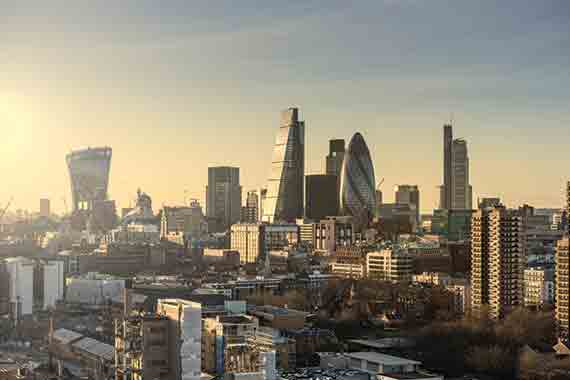 Landlords: if you know where tech firms are going, what they want, and how they see themselves, you can tap a lucrative market. gathers the relevant data
Landlords: if you know where tech firms are going, what they want, and how they see themselves, you can tap a lucrative market. gathers the relevant data
1 London tops the table
Tech industry office take-up is higher in London than in any other destination in Europe. Paris and Munich reported a decrease in take-up last year.
 2 London digital growth third-fastest
2 London digital growth third-fastest
Inner London, with 251,590 people employed in digital industries, has the third fastest-growing digital cluster in the UK behind, surprisingly, Bournemouth and Brighton on the south coast.
 3 Jobs growth projections
3 Jobs growth projections
Media tech is forecast to create 28,000 jobs in London by 2017, generating a requirement for a further 1.1m to 2.8m sq ft of offices, depending on how conservative your calculations are.
4 Old is established, new is going for growth
The tech sector has evolved into old-school and new-school businesses. Old-school includes publishing, broadcasting, PR, marketing, graphic design and hardware developers. They are more established businesses with static growth potential. New-school tech is loosely described as developers of apps, software, digital and web-based services and IT. “Our research reveals that new-school businesses are looking to increase headcount by 40%,” says BNP Paribas Real Estate’s David Herzog.
5 Top cluster specialisms
Inner London’s top three digital
sectors per cluster are data management/analytics, fintech, and marketplace and lead generation.
6 Talent in the spotlight
Access to talent and good technical infrastructure are digital industries’ top requirements. These factors plus business opportunities and a good lifestyle for staff trump access to finance and universities.
7 Preferred locations begin with “S”
It’s all about the S’s. Tech firms tend to prefer Shoreditch, South Bank, Seven Dials (Covent Garden), Soho and the Square Mile. Divide this into old-school and new-school tech (see number 4) and the old school prefers Soho, Covent Garden and the South Bank, while the new school likes Smithfield, Shoreditch, Aldgate, Whitechapel and the City.
8 Leave it up to them to decide
Shell and core may be the best option when considering tech occupiers, as according to a survey they are split 50:50 between what kind of ceiling they prefer.
9 Conventional is not necessarily undesirable
Don’t think top rents and exposed brick. As with any business sector, not all firms will pay headline rents. And office style preferences are surprisingly conventional – single floors with air conditioning and fixed desks.
10 Poor connectivity is a deal-breaker
Lack of suitable property, poor broadband and limited access to recruits are the three key issues perceived to stymie growth for London’s digital companies.
Source: Tech City UK’s Tech Nation report for 2, 5, 6, 10 and
BNP Paribas Real Estate’s Media Tech report for 1, 3, 4, 7, 8 and 9
What’s in a name?
TMT, techies, media tech, DAMIT (Digital, advertising, media, information, technology – or something) … there is no consensus on what to call this growth area of the economy.
The problem is that “TMT” is a bit dotcom-boom era and too broad-brush for such an eclectic mix of industries. “Media tech” is growing in popularity, but even that is loosely subdivided; BNP Paribas Real Estate has old-school and new-school subheads (see point 4).
At a tech occupier roundtable last year, Juliette Morgan said she preferred the title “future industries”. You can see where she is coming from, but it may be a bit “space-age” for something already ubiquitous.
Is it time to start subdividing the sector properly into its relevant clusters rather than trying for a catch-all moniker?
No, not like that, like this
Juliette Morgan, partner, London markets, at Cushman & Wakefield and head of property at Tech City UK, reveals the top three common misconceptions the property industry makes about the tech and creative industries.
1. The property industry assumes that tech start-ups and grow-ups can’t pay. However, they can and do pay – often fairly high rents on an all-inclusive basis to co-working providers. It’s not that they can’t pay, it’s that they don’t know how long they can pay for and so can’t pay deposits, fit-out and long leases.
2. There is an assumption that these entities want bare-brick, bare-flex and squirrel-cage light bulbs. This is an aesthetic that goes back to the industry’s early colonising of warehouse space. They don’t necessarily want it where it isn’t authentic and is a throwback to cheap space. Tech companies want good design but not bare brick and exposed ceilings for the sake of it. It’s all about authenticity for these guys.
3. There is often an assumption that tech companies are run by beer-swilling “lifestyle” hipsters who fool around on slides. That may be true for a very few, but many are more conventional. Mostly they are people trying to build valuable businesses and would like to work with the property community to get there faster. These people are generally putting everything on the line to build their business. Doesn’t sound like a “lifestyle” to me.











